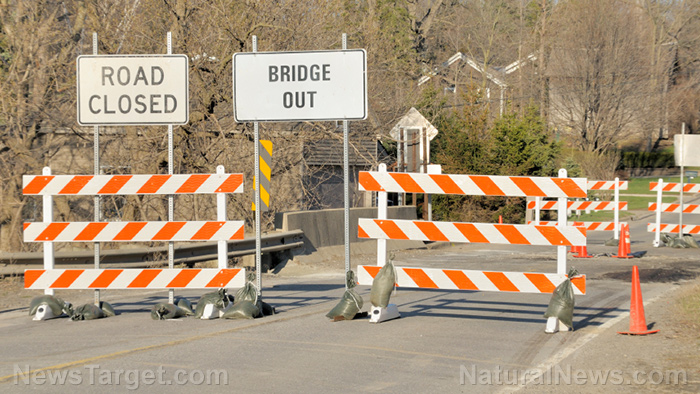 Parler
Parler Gab
Gab
More and more bridges at risk due to ship collisions
In a statement, police emphasized the potential risk posed by the drifting barges to sub-structures along the river. They urged the public to steer clear of the affected area until further notice, prioritizing safety amid the unfolding situation. This incident occurred in the wake of another recent bridge mishap, where the Francis Scott Key Bridge collapsed following a collision with a container ship named the Dali, flying the Singaporean flag. The vessel struck a support column on the bridge roughly 20 minutes into its journey. As recovery efforts continue, divers have retrieved three bodies from the submerged wreckage, while three individuals remain missing. Crews are diligently working to extract sections of the collapsed bridge, including those entangled in the muddy depths of the Patapsco River. Watch this clip of a barge hitting the U.S. 59 Bridge over the Arkansas River in Oklahoma. This video is from the Cynthia's Pursuit of Truth channel on Brighteon.com.More related stories:
Another container ship "loses power" in NYC harbor right before Verrazzano-Narrows Bridge. Rebuilding Francis Scott Key Bridge could cost $1 billion and take 10 years. Baltimore bridge ship crash fatalities: 2 confirmed dead, 4 still missing. Francis Scott Key Bridge collapse an "absolutely brilliant strategic attack," say multiple intel sources. Baltimore bridge collapse due to ship strike will have sweeping economic repercussions. Sources include: USAToday.com FoxWeather.com DailyMail.co.uk Brighteon.comU.S. quietly sent Ukraine long-range missiles following a secret directive from Biden
By Cassie B. // Share
Powdered cheese: A versatile, shelf-stable food to add to your survival stockpile
By HRS Editors // Share
Biden signs $95 billion aid package for Ukraine, Israel and Taiwan into law
By Laura Harris // Share
U.S. military and contractors are exploiting Ukraine conflict to test AI-powered military technology
By Kevin Hughes // Share
Russia claims to have seized the initiative in Ukraine with significant territorial gains
By Richard Brown // Share
Governments continue to obscure COVID-19 vaccine data amid rising concerns over excess deaths
By patricklewis // Share
Tech giant Microsoft backs EXTINCTION with its support of carbon capture programs
By ramontomeydw // Share
Germany to resume arms exports to Israel despite repeated ceasefire violations
By isabelle // Share










